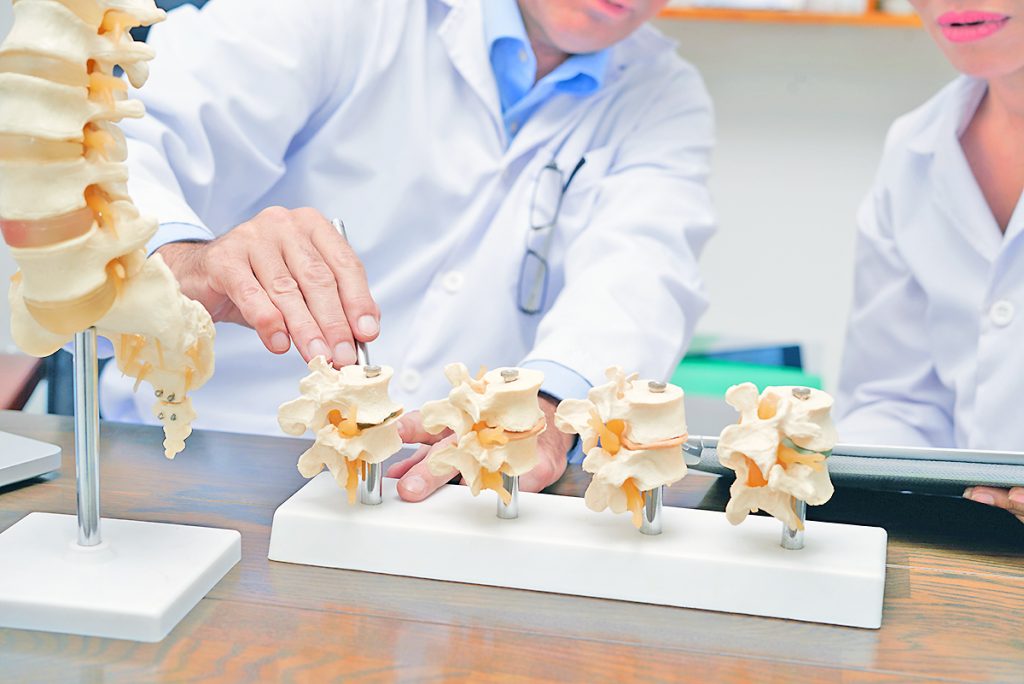Understanding Cervical Degenerative Disc Disease
Cervical discs can become dehydrated and stiff over time. This can lead to neck pain and other symptoms. And eventually, cervical degenerative disc disease may occur.
Pain can arise from cervical disc degeneration. But, not everyone feels pain. This is due to differences in pain sensory for people. Some people have nerves that run deeper. Therefore, They have a higher pain threshold. Pain from a degenerating disc is likely from the following:
Discogenic pain. This pain occurs in the disc. Cervical nerves go into the outer third of the outer layer of the disc. This is the annulus fibrosus. If this layer gets torn, the nerves can grow deeper. It does this to try and heal. The disc’s interior, the nucleus pulposus, leaks out. The proteins become inflamed upon touching the nerve. Pain can range from mild to severe.
Micro-motion instability. When a disc breaks down, the outer layer is weakened. It no longer provides shock absorption or stability. The vertebrae on each side can go into spasms. As can the muscles in the area. These spasms are to limit the abnormal movement. But, they are quite painful.
Pain from cervical disc degeneration can be dull and achy. It can also be intense and limit movement. In most cases, the pain subsides within a few weeks. As the inflammation subsides, so does pain. The disc will stabilize in its new position.
Conditions Associated with Cervical Degenerative Disc Disease
Cervical degenerative disc disease can be present with other conditions. Some of the most common include the following:
- Herniated cervical disc. The nucleus of the disc can wedge into the outer layer. This is common if there are tears present. If the disc passes through, it has become herniated. Traumatic injuries can also cause herniated discs. Therefore, speeding up any degeneration. The final outcome, however, is cervical degenerative disc disease.
- Cervical osteoarthritis. Disc degeneration causes the vertebral column to collapse. Fact joints will move or sublux, which wears on the cartilage. And, bone spurs can develop on the neck.
- Cervical spinal stenosis. This occurs as a result of narrowing in the spinal column. It also refers to the narrowing of the foramina. This is where the spinal nerve runs through. Bone spurs are the most common reason for this, though. And disc degeneration can lead to osteoarthritis. Therefore, leading to spinal stenosis. Some individuals are even born with a congenital form of cervical stenosis.
- Cervical radiculopathy. This occurs when a spinal nerve becomes compressed. You may feel pain, tingling, and numbness down the shoulder. However, it can also radiate through the arm and hand. A herniated disc or bone spur is likely to be the cause.
In Conclusion
If the spinal cord becomes compressed at the neck level, myelopathy develops. Pain, tingling, and numbness can be felt across the neck. Symptoms can also appear anywhere below, such as the legs. It is crucial to seek medical care if you have symptoms. The condition can progress without treatment. Paralysis is possible in multiple limbs.
If you are experiencing cervical degenerative disc disease, call us at 888-409-8006. Our top spine specialists are happy to help. Our offices are conveniently located in Boca Raton, Deerfield Beach, Coral Springs & Plantation.

